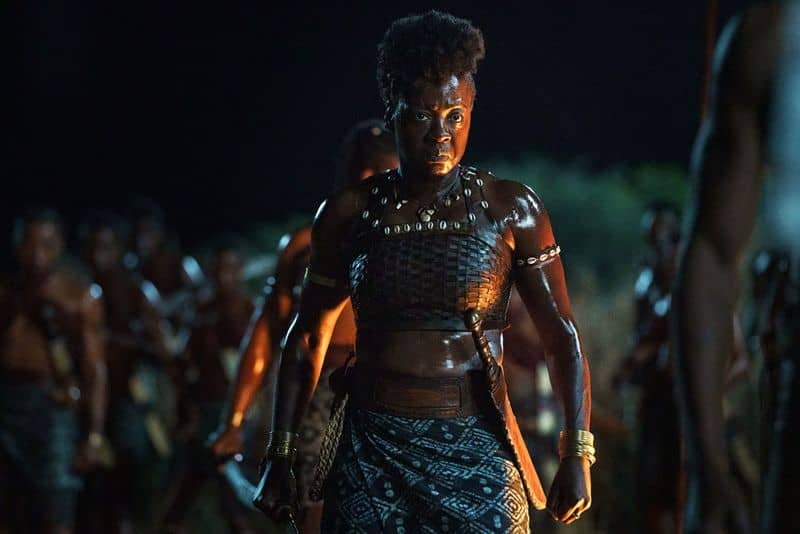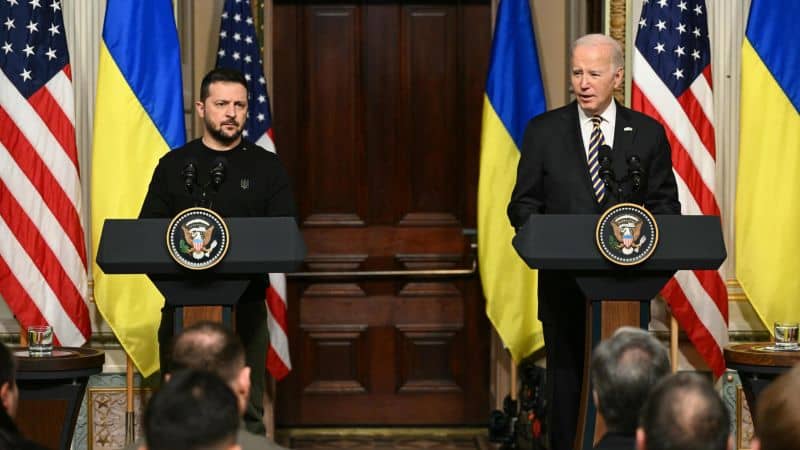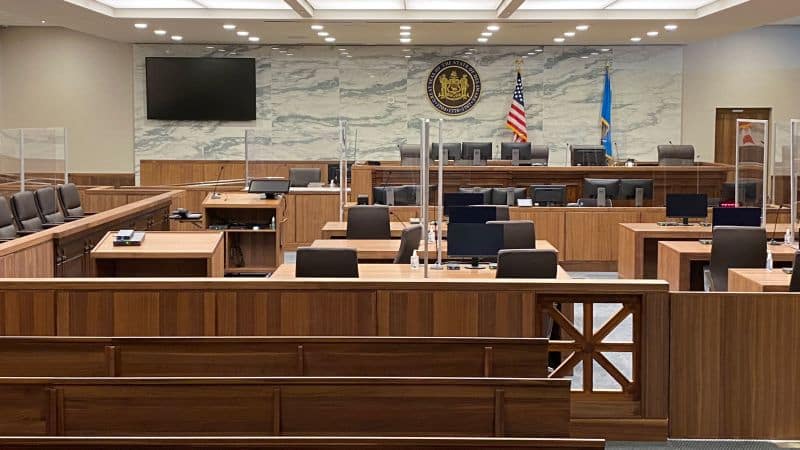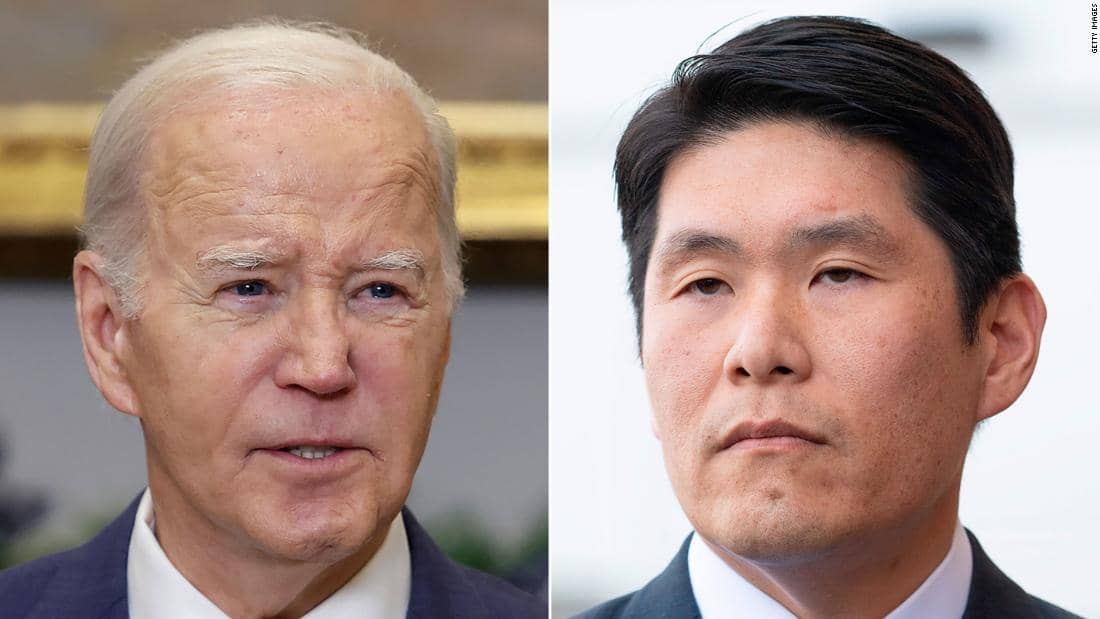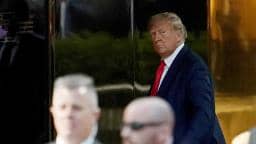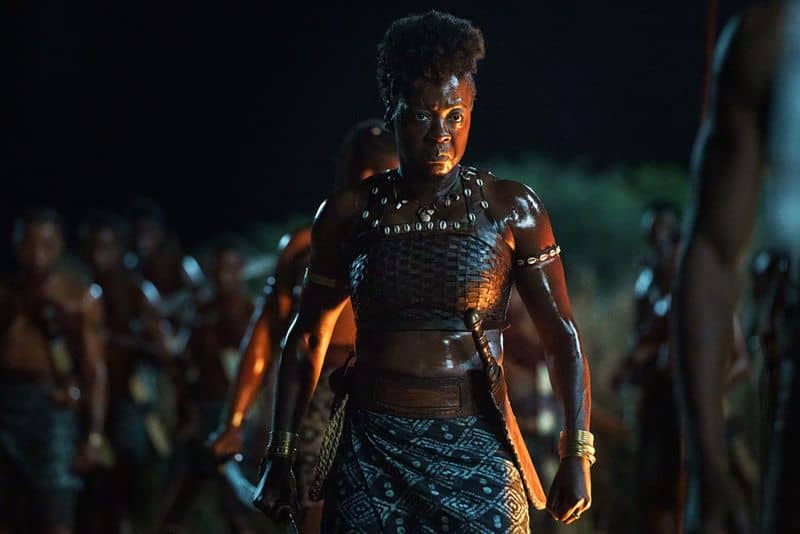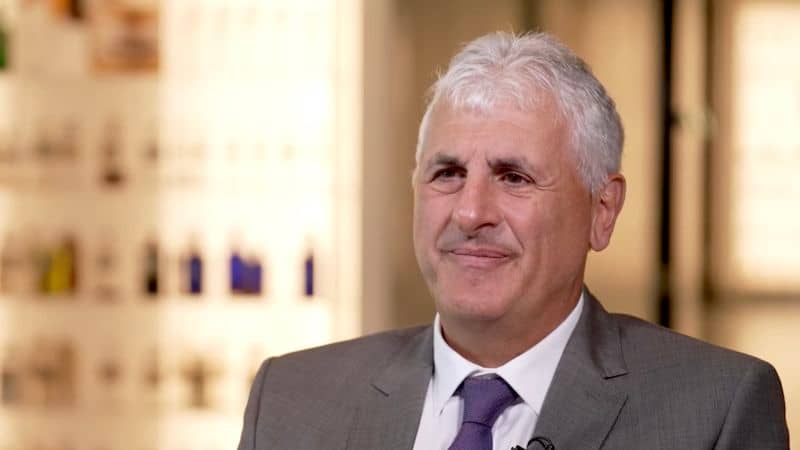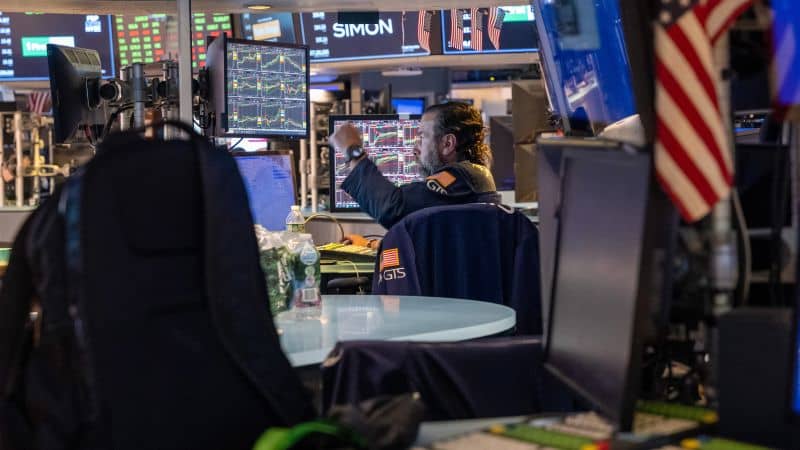Although “inspired by true events,” “The Woman King” clearly isn’t tethered to them, using the underlying story of 19th-century female warriors in an African kingdom as the jumping-off point for a rousing

CNN
—
President Joe Biden proclaimed a huge win for rail workers and organized labor Thursday after his administration brokered a tentative deal with freight bosses on long-sought improvements in working conditions and averted a potentially disastrous strike.
Biden has long been an advocate of trade unions, saying as recently as his Labor Day speech in Pittsburgh that “unions built the middle class.”
But his intervention – including calls with union leaders and bosses in the critical run-up to the deal on Wednesday night – helped lift the threat of a dispute that could have had serious consequences for the economy and still-roaring inflation after talks, led by his Labor Secretary Marty Walsh, lasted all through Wednesday and into the middle of the night on Thursday.
The agreement in principle was a validation of Biden’s support for unions, a politically significant factor given the movement’s role supporting Democrats in November’s midterm elections. But it also averted a prolonged shutdown of freight rail that could have hammered the economy and hurt the President and his party politically and exposed him to Republican criticism.
Biden hailed the tentative agreement as “a win for tens of thousands of rail workers who worked tirelessly through the pandemic.”
The key issue in the dispute was not pay but working conditions, which saw some freight rail engineers and conductors facing “on-call” schedules that could see them rostered to work at short notice, 24-hours-a-day and seven-days-a-week.
Dennis Pierce, president of Brotherhood of Locomotive Engineers and Trainmen who was in the talks, said the administration’s involvement in driving toward the tentative agreement delivered what the workers wanted on this issue.
“This is a historic agreement for the first time in recorded history we were able obtain an agreement that has negotiated attendance rules, something we’ve strived for. This is the quality of life issue that we have been trying to get for our members since the bargaining round started,” Pierce said, and like other union negotiators, paid tribute to Biden’s role.
The threat of a strike has not gone away entirely; the deal needs to be ratified by union members. But if blessed, the agreement will sure to be hailed by the President on the campaign trail as another deliverable for an administration that he says is rooted in improving the lives of working- and middle-class Americans.
An extended halt of the vast freight trains that snake across the prairies and north to Canada and south to Mexico would have caused a full-blown economic, social and political crisis at a time when the nation is still clawing its way back from a fragile and redefined sense of normality after the Covid-19 pandemic and facing the worst spikes in food prices since 1979.
A quarter of the way into the 21st century, it’s a little shocking that a rail network that most Americans probably don’t spare a thought for still forms an economic backbone of the nation. But the latest showdown is far from the only occasion in history when labor disputes in this critical industry have threatened nationwide disruption, and have turned into high-stakes political dramas as a result. Without freight rail, the country can’t properly function.
The dispute may be focused on the railroads, but it is also emblematic of a wider trend in industrial relations in modern America, as workers squeezed in ventures pared back aggressively for maximum profit potential, from retail to health care to transportation, demand livable working conditions and turn to unions for help.
The repercussions of a rail strike would have been dramatic.
Roughly 30% of America’s freight moves by rail. If vast trains, some with 240 wagons, don’t move, the country would need to find an impractical 80,000 truck drivers to make up the shortfall. It might seem counterintuitive, but a strike on the railways would send gasoline prices for cars soaring again. That’s because refineries would struggle to get sufficient crude oil from their rail deliveries. Recently harvested crops would be stuck, unable to reach processing plants and could spoil. Farm groups warned of the threat to fertilizer stocks that are transported by rail and needed for the next planting season. There would have been shortages of food and other items in stores – and prices could have risen again, adding to the current plague of inflation. New and used cars would be more expensive, if factories can’t get the parts they need for their assembly lines. And the ports that became clogged during the pandemic could have again filled up, in a huge problem for the US economy that would quickly send shockwaves around the world.
A strike lasting weeks could have underscored, yet again, the tenuousness of the supply chain networks that are the foundation of modern life and how it doesn’t take long to incur serious damage.
These painful consequences, which could touch every American, explain why the talks in Washington brokered by Walsh were so important and urgently pursued.
Negotiations to avert the strike went on for 20 hours, with a deal reached around 5 a.m. ET Thursday, a source familiar with the matter told CNN’s Jeremy Diamond and Phil Mattingly. Biden “made a crucial call” to Walsh and negotiators Wednesday night, the source added, pushing both sides to realize the harm that families, businesses and communities would feel if there was a shutdown of the rail system.
A rail shutdown was not just a threat to the day-to-day lives of millions of Americans. The prospect was a huge problem for Biden and Democrats, first because they know that their brightening chances of staving off a Republican wave in the midterms could be dashed by another devastating shock to the economy that sends prices even higher and shatters the sense of normality that Biden pledged to restore. Another surge in inflation caused by a rail strike could also force the Federal Reserve to prolong its aggressive interest rate strategy, which is expected to go up another notch next week, and so raise the chances of an overcorrection that sends the economy into a recession.
The President, boosted by the passage of key congressional items, has been aggressively selling a story that America is back on the move again and that its economy is ready to roar. A rail strike would quickly tarnish his credibility in selling that narrative.
In a broader sense, the rail dispute pulled Biden between two competing strands of his political identity. He is the most-pro union president in decades. He needs the support of the movement to drive turnout in November and has no desire to be seen pressuring workers to accept a bad deal. On the other hand, the success of his entire presidency rests on getting inflation down and preventing Republicans from amassing Capitol Hill majorities that could make him a domestic lame duck.
Republicans, seeking to wrest the midterm debate back from the controversy over the Supreme Court’s overturning of abortion rights, already spotted an opening in the rail dispute. The GOP tried and failed to pass a bill in the Senate that would enshrine deals most railway unions have made with companies and avert a strike.
“President Biden should have already resolved this himself. Democrats must let this pass,” Senate Minority Leader Mitch McConnell tweeted.
But some Democrats are unwilling to put pressure on unions. The GOP measure was in the end blocked by progressive Sen. Bernie Sanders, who’s twice run for the Democratic presidential nod. The Vermont independent blasted rail companies for making billions in profits and awarding their CEOs millions in compensation while imposing inhumane working conditions.
“The key issue in the current negotiations are not about salaries. They are about the working conditions in the industry which are absolutely unacceptable and almost beyond belief,” Sanders said, criticizing the lack of sick leave offered to some employees and a system that requires many to be on call for dispatch to work on trains 24 hours a day a day and seven days a week.
Arthur Wheaton, director of Labor Studies at the ILR Worker Institute of Cornell University, said that years of cost cutting and consolidation in the rail industry predated the pandemic and have led to the current impasse.
“The railways tried very hard to reduce headcount and actively reduce the number of people that they had working for them as a way to increase their profits or to have a higher return on investment so they could get more investment from Wall Street,” Wheaton said. But that paring down of manpower had caused a deterioration in the conditions for workers, who already faced long hours, and could raise safety concerns given the hazardous cargos some trains carry. The “on call” system mentioned by Sanders is at the center of the current dispute.
“That’s not sustainable for a family or sustainable for your health long term. You’d like to be able to go to bed knowing you don’t have to work for the next 12 hours, instead of saying, ‘Oh, I gotta wait and see if the phone rings,” Wheaton said.
The threatened railroad shutdown would have been the first major strike in the industry since 1992, when Congress moved with unusual speed to end a labor stoppage after only two days amid severe economic consequences – including layoffs at mines that could no longer ship out their coal. The strike had shut down almost all goods and passenger rail in the country and, as with the current drama, threatened to become a political storm in an election year.
One question with this new dispute is whether an ever-more polarized Congress could agree on terms for ending industrial action or whether such an erupting economic crisis would have left rival lawmakers with no choice.
Throughout America’s industrial history in the 20th and 19th centuries, railroad strikes often broke out over poor wages or salary cuts or difficult and dangerous conditions. Often they were crushed by the government or industry barons, sometimes amid scenes of violence. But they are also written in the lore of the labor movement. And they also established leverage that played out in the negotiations between unions and company bosses in Washington.
Then and now, the threat of closing down railroads for a sustained period conjures such dire economic repercussions that the dispute ends up becoming a major political issue that the nation’s leaders are ultimately called on to help solve – for their own good and everyone else’s.
Don't Miss
Group of Seven leaders have reached an agreement to loan money to Ukraine backed by the profits from frozen Russian investments, a senior US administration
CNN — This is it. The media defamation trial of the century is on the precipice of kicking off in
Robert Hur speaks during the hearing Tuesday. Jacquelyn Martin/AP Robert Hur explicitly said he “did not exonerate” President Joe Biden

“There are reports that Durham’s team also looked into a wide range of other matters that … Trump has publicly complained about — without bringing any charges. This includes potential wrongdoing by the CIA and other parts of the US intelligence community, on topics related to Russia’s pro-Trump interference in the 2016 election.”
It’s also worth remembering here what the FBI’s original counter-intelligence investigation into Russian interference in the 2016 election actually found: That Russia actively sought to meddle in our election, with the express purpose of helping Donald Trump and harming Hillary Clinton. They did so because they believed Trump would be better for their interests.
So, it’s not over until it’s over — and all that.
But what seems plain is that all of Trump’s hype of the Durham probe has been empty. Three low-level prosecutions is not the “crime of the century,” as Trump has called it. Nothing that has come out to date suggests that Hillary Clinton or anyone remotely in her orbit had anything to do with the start of the FBI’s counterintelligence operation to look into Russia’s meddling in the 2016 election.
These facts will, of course, not get in the way of Trump’s continued obsession. He has, of late, used his Truth Social platform to villainize the Department of Justice and, if the Durham probe winds up being a total nothing burger, will likely insist that it’s because the department has been weaponized against him.
His proof of that claim? Nonexistent. But that won’t keep his base from believing him. Just like they did about the Durham probe being the thing that would blow the lid off of the whole grand conspiracy of people out to get him — or something.
Don't Miss
What to know about the Trump indictment on the eve of his court appearance Source link
Chris Christie explains why he thinks Trump skipped debate Republican presidential candidate Chris Christie talks with CNN’s Phil Mattingly about
READ: Trump indictment related to hush money payment Source link

Although “inspired by true events,” “The Woman King” clearly isn’t tethered to them, using the underlying story of 19th-century female warriors in an African kingdom as the jumping-off point for a rousing action vehicle, augmented by plenty of melodrama. That combination yields a strong showcase for the stars, featuring a cast and backdrop that serves to refresh its old-school formula.
Regal as always, Viola Davis provides the movie with its rock-solid core as General Nanisca, the leader of the Agojie, known as the Dahomey Amazons, a unit of women who swear off marriage and motherhood to pursue martial arts and defend the kingdom. It’s an egalitarian streak within a society where the king (John Boyega) still possesses a sprawling harem.
The point of entry into this warrior culture comes by way of Nawi (“The Underground Railroad’s” Thuso Mbedu, with another mighty performance against a vast canvas), an independent-minded, headstrong young woman who refuses to marry for money, finally prompting her frustrated father to drop her off at the palace.
There, she’s taken under the wing of Izogie (Lashana Lynch, adding to an action resume that includes “Captain Marvel” and “No Time to Die”), and trained to undergo the brutal regimen that will eventually admit her into this corps of elite troops.
The boot camp that follows – which will surely serve as a source of inspiration for modern-day workout programs – proceeds in concert with preparation for potential war against a rival kingdom, the Oyo Empire, that has extorted tribute from the Dahomey for years. Nanisca, meanwhile, urges the king to depart from his participation in the slave trade, arguing that selling captured foes to the Europeans has created “a dark circle” as they increasingly intrude upon their lands.
‘My body went through hell’: Viola Davis on training like a warrior for upcoming film
Directed by Gina Prince-Bythewood (“Love & Basketball”), the sweeping contours of the story are, quite simply, a lot to digest, especially with the various subplots and Nanisca’s back story that gets tossed into the mix. (The script is by Dana Stevens, who shares story credit with actor Maria Bello.)
Shot in South Africa, the film helps bridge some of the expository gap by opening with a brutal action sequence, demonstrating just how fierce Nanisca and her loyal soldiers can be. It’s the first of several such encounters, and although the scenes are carefully shot to mitigate gore, the level of violence and form of warfare are such that the PG-13 rating seems questionably generous.
Nanisca worries that her warriors “do not know an evil is coming,” a tease for the pending battle against the Oyo. But “The Woman King” perhaps excels most in portraying this fascinating subculture given the time and place, playing like a celebration of African traditions while incorporating a decidedly modern tone, and still servicing the escapist demands of a Friday-night audience.
Prince-Bythewood has accomplished that last goal with brisk pacing and the sheer muscularity of the exercise, with a significant assist from Terence Blanchard’s epic score. With its heavily female and almost entirely Black cast, the movie could give a welcome boost to other projects that have historically struggled in terms of studio support.
Somehow, the film manages to feel like a throwback to the action movies of old while featuring people who were seldom allowed to occupy prominent roles back then. If the finish is a bit too busy to be as rousing as intended, by then, “The Woman King” has made the most of its formidable arsenal.
“The Woman King” premieres September 16 in US theaters. It’s rated PG-13.
Don't Miss
Nike says it’s time to stand up for equality in a new ad campaign. The company on Sunday launched a
CNN — Here is a look back at the events of 2023. January 3 – Republican Kevin McCarthy fails to
Unlimited 2% cash rewards — Cardholders earn an unlimited 2% cash rewards on purchases, with no categories to activate or earnings

Editor’s Note — Coronavirus cases are in flux across the globe. Health officials caution that staying home is the best way to stem transmission until you’re fully vaccinated. Below is information on what to know if you still plan to travel, last updated on September 15.
The basics
There are no current Covid-related restrictions on international travel to France, although the country has had some of the most stringent Covid-19 restrictions in the world, including three lockdowns. While a few safety measures remain in place, the vast majority of restrictions have been eased.
What’s on offer
The historic boulevards of Paris, the fashionable sweep of La Croisette in Cannes and the rolling lavender fields and vineyards of Provence. France remains one of the world’s most enduring tourist destinations.
With superb food, even better wine and landscapes and cities to satisfy every kind of traveler, it never disappoints.
Who can go
As of August 1, there are no Covid-19 related travel restrictions for France. This means travelers are no longer required to present proof of vaccination, complete a sworn statement before arrival or show proof of a negative PCR or antigen test, regardless of their vaccination status.
The same rules apply for travel between mainland France and French overseas territories.
“Faced with the new phase of the pandemic, the border health control system is lifted, in accordance with the law putting an end to the exceptional regimes created to fight against the epidemic linked to Covid-19,” reads a statement from the French Ministry of the Interior and Overseas.
“The government retains until 21 January 2023 the possibility of activating ’emergency brake’ measures for a maximum period of two months, after consulting the high authority for health in the event of an appearance and circulation of a new variant of Covid-19 likely to constitute a serious health threat or, in overseas territories, in the event of a risk of saturation of the health system.”
What are the restrictions?
As stated above, there are currently no Covid-19 related restrictions on international travel to France.
What’s the Covid situation?
France has been one of the hardest hit countries in Europe, with over 35 million cases and 155,651 deaths as of September 15.
The emergence of the Omicron variant towards the end of 2021 brought about yet another rise in infections, with over 2.5 million infections recorded in one week towards the end of January 2022. The number of Covid-19 cases in the country would later stabilize. However, Covid-19 infections have been on the increase yet again.
There were 155,068 cases in the week leading up to September 15. Over 81.2% of the population is fully vaccinated.
What can visitors expect?
Masks or face coverings are no longer compulsory indoors or on public transport. However, officials have advised people to start wearing masks in crowded spaces once again due to rising Covid-19 cases in the country.
Since March, a vaccine pass has no longer been required to enter indoor venues, aside from hospitals and care homes.
Useful links
Our latest coverage
Joe Minihane, Julia Buckley and Tamara Hardingham-Gill contributed to this report
Don't Miss
What to know about the Trump indictment on the eve of his court appearance Source link
London CNN — When Africa needs medicines, all too often the continent must look abroad. African nations consume about 25%
A “Help Wanted” sign is seen at a Golden Krust location on June 7 in the Flatbush neighborhood of Brooklyn

CNN
—
The gap between a star performance and the movie containing it has seldom been wider than in “Blonde,” which features Ana de Armas stunningly capturing the look and essence of Marilyn Monroe in the service of a film that’s pretentious, heavy handed and lengthy to the point of exhaustion. Netflix will surely get its money’s worth attention-wise thanks in part to its restrictive NC-17 rating, but the film’s merits burn out long before its credits ever roll.
Adapted from Joyce Carol Oates’ novel about the Hollywood icon by writer-director Andrew Dominik (“The Assassination of Jesse James by the Coward Robert Ford”), the movie works from the premise that not only did the frozen-in-time star suffer because of the men around her, but also the society (that is, us) that leered at her even in the pre-Internet age. It’s not a fresh take or a wrong one, but the tone is so self-conscious and surreal as to blunt those insights.
Blurring fact and fiction, “Blonde” begins with the very young Norma Jeane and her relationship with the mentally disturbed mother (Julianne Nicholson) who was forced to give her up, returning time and again to the idea that the she never stopped pining for the father she didn’t know, while seeking to replace him with the famous men who wooed, wedded and exploited her.
Norma Jeane is eventually transformed into Marilyn Monroe, but even then she consistently speaks of her star persona in the third person, as if the image stands apart and utterly separate from the human being behind it.
The irony is that as much as the New Zealand-born director labors to humanize Marilyn – after numerous movies based on her life, including several for television – this version fares best in depicting the familiar image through replicating scenes from her films. De Armas and the staggering hair/makeup/costume work present those moments so uncannily (occasionally mixed with footage of Monroe’s co-stars) that you have to blink to make sure it’s not the real thing.
Ana de Armas transforms into Marilyn Monroe in Netflix’s ‘Blonde’
Beyond that, the film gruelingly drags on through unhappy interludes of the actress being used and abused, oscillating between color and black-and-white imagery in a way that feels arbitrary. Dominik also distastefully deals with Monroe’s lost pregnancies by peeking at the fetus inside her, which becomes symbolic of just how overdone much of the movie is.
Those excesses can’t entirely eclipse the fearless and vulnerable nature of de Armas’ portrayal, and she’s probably right in contending that the NC-17 rating (a guidance suggesting only adults be admitted to theaters) is undeserved, given similarly edgy fare that hasn’t received it. Then again, the label seems on surer footing contemplating the film’s overall grimness than its sexuality.
Several supporting roles are also impressive, with Bobby Cannavale and Adrien Brody as Monroe’s husbands Joe DiMaggio (again shown grimacing through “The Seven Year Itch” shoot) and playwright Arthur Miller, respectively.
Still, “Blonde” is almost wholly de Armas’ show, and to the extent it’s worth sitting through at all give her every ounce of credit. When she tells DiMaggio, “I’ve been happy all my life” in Monroe’s honeyed voice, the lie is as unconvincing as it is heartbreaking.
Netflix is providing the movie the now-customary brief theatrical run after making its debut at the Venice Film Festival, but homes are surely where it’s most apt to be watched, especially given its 2 hour, 46 minute running time.
In a private setting, viewers will be able to take all the breaks they need to weather the experience, but they won’t be able to escape the film’s relentlessly lurid, in-your-face approach. Indeed, once you get past admiring de Armas’ immersion into the role, that’s the only itch that “Blonde” seems to know how to scratch.
“Blonde” premieres September 16 in select US theaters and September 28 on Netflix. It’s rated NC-17.
Don't Miss
Nike says it’s time to stand up for equality in a new ad campaign. The company on Sunday launched a
CNN — Here is a look back at the events of 2023. January 3 – Republican Kevin McCarthy fails to
Unlimited 2% cash rewards — Cardholders earn an unlimited 2% cash rewards on purchases, with no categories to activate or earnings

CNN
—
Two buses carrying migrants arrived Thursday at the US Naval Observatory – the vice president’s residence in Washington, DC – from Texas, surprising volunteers who were not prepared to receive them there, volunteers in the district said.
Texas Gov. Greg Abbott has been busing migrants to the nation’s capital to protest the Biden administration’s immigration policies, but the buses largely had been dropping them off around Washington’s Union Station.
Volunteers were prepared to receive a bus Thursday at the station but learned that the buses went to the Naval Observatory instead, volunteers said.
SAMU First Response, one of the groups helping migrants in Washington, was not provided a heads up, according to Tatiana Laborde, managing director of SAMU First Response.
This is a developing story and will be updated.
Don't Miss
CNN — Six people have died in a helicopter crash in Nepal, a spokesperson for Kathmandu’s Tribhuvan International Airport said
CNN — In New York City, hundreds of migrants are staying in current or former school gymnasiums. In Chicago, dozens
Video player was slow to load content Video content never loaded Ad froze or did not finish loading Video content

